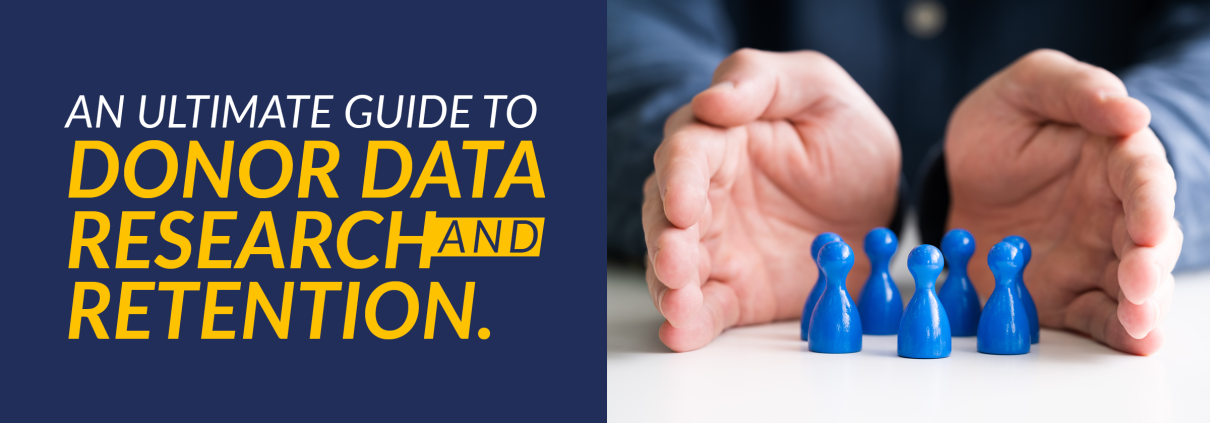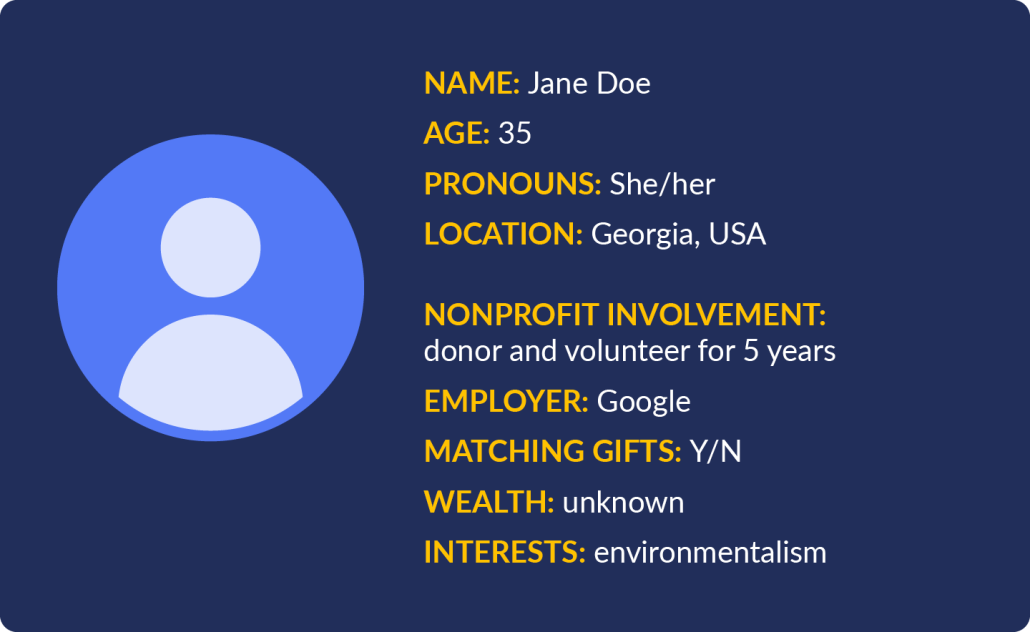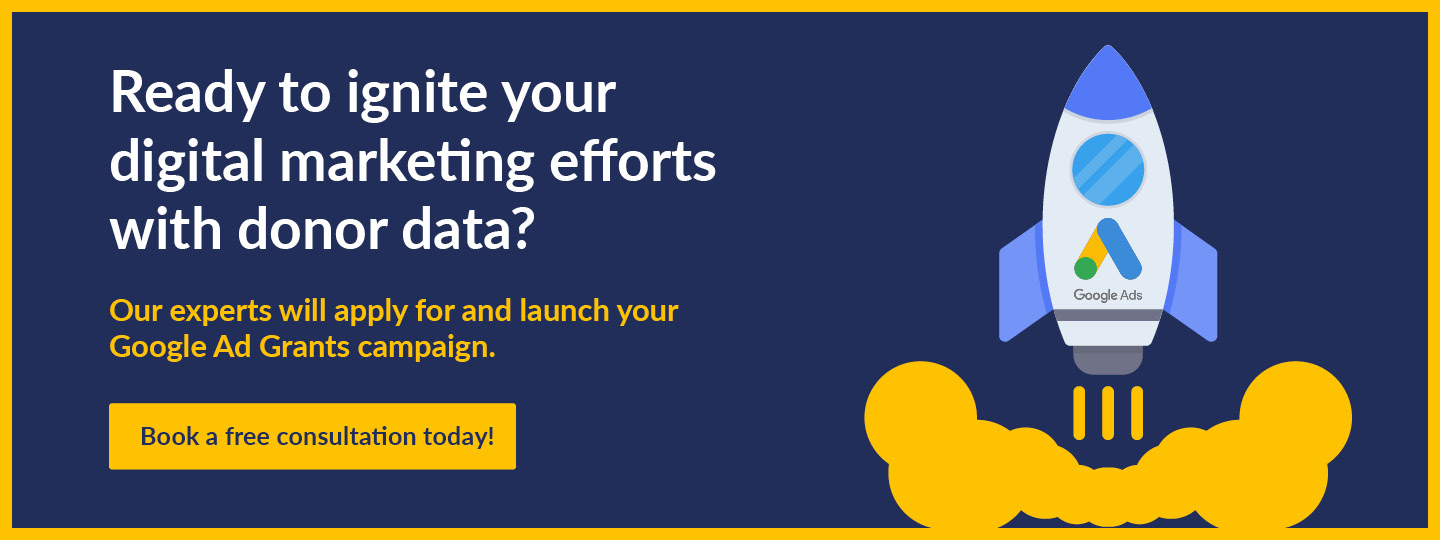An Ultimate Guide to Donor Data Research and Retention
You’ve likely heard the saying that it’s cheaper to retain a donor than it is to find a new one. It’s why maintaining high levels of retention is so crucial for many organizations. Luckily, donor data research can help!
In this guide, we’ll walk you through everything you need to know about donor data and how it can impact your overall retention rates. This will include:
- Types of Donor Data to Prioritize
- How Nonprofits Can Collect Donor Data Insights
- The Impact of Donor Data Research on Retention
By collecting detailed information about your supporters, you can develop beyond-surface-level relationships and better target your marketing outreach to each individual. In the end, you’ll see more donors continuing to support your efforts, providing your organization with improved fundraising results over time.
Ready to find out how to leverage donor data research in your retention strategy? Let’s begin with the basics.
Types of Donor Data to Prioritize
There’s a ton of information available out there about each and every person. To optimize your donor retention strategy, you need to know which types of data will be of use to you.
We recommend prioritizing the following:
Contact information
An individual’s contact information is the most essential element of their donor profile. It’s what you need to get in touch with the donor after their initial contribution, thank them for their support, and begin developing a relationship. In the end, it’s also what you’ll use to send follow-up donation requests.
Ideally, this donor data should include as many of the following details as possible:
- Name
- Phone number
- Email address
- Mailing address
If you have multiple ways to get in contact with a donor, it can also help to note their preferred communication methods. This might incorporate text messaging, phone calls, email correspondence, direct mailings, and more.
Nonprofit involvement
Next, it’s important to have a solid understanding of an individual’s historical nonprofit involvement—both with your organization and others. Thus, ideal data on an individual’s nonprofit involvement should include:
- Previous donations to your nonprofit
- Volunteerism experience
- Giving to other organizations (especially those with similar missions)
- Nonprofit board participation
For example, you’ll want to engage with a long-time repeating donor much differently than you would a first-time contributor to your cause. Luckily, this information should be one of the easiest to collect and leverage—particularly when it comes to giving history in regards to your own organization—using your nonprofit’s CRM or donor management system.
Employment details
Did you know that your donors’ employment information is one of the most crucial pieces of data you can access? Not only can this information help roughly identify your supporters’ wealth status (more on that below), but it can also open up significant opportunities for matching gifts, volunteer grants, and more. Plus, understanding employment status can even help uncover invaluable business connections and open doors for potential corporate sponsorships as well.
So what exactly do you need to know? The company an individual works for is likely the simplest data point to find. From there, however, additional information such as employment type (full-time, part-time, seasonal or temporary, retired, etc.), job title, and tenure at the business can provide further insights into a donor’s employment.
Matching gift eligibility
A donor’s matching gift status is most often directly related to their employment. But an individual’s matching gift eligibility is such a key component that it should be considered its own donor data point altogether.
Once you know where your donors work (and typically, their employment type), you’ll be more likely to determine whether they qualify for workplace giving programs. From there, you’ll be able to easily and efficiently communicate that eligibility to each individual.
As a result, this data point can function as an additional engagement opportunity (or more likely, multiple). Not to mention, studies report donors being more likely to give if they know that their gift can be matched! And when you follow up with match-eligible donors after they give, you can keep your organization at top of mind for longer, remind them about the impact of potential matches, and ultimately drive more corporate revenue toward your cause.
Wealth data
Understanding a supporter’s wealth level is an essential part of determining ideal donation request amounts and, thus, optimizing your donor relations strategy. In order to craft a solid estimate for an individual’s ability to give, consider the following types of wealth marker information:
- Real estate ownership
- Stock ownership
- Political giving
- Business affiliations
- Salary estimations
Together, these data points enable you to recognize and identify prospective major donors and target them as effectively as possible within communications.
Bonus! Hobbies and interests
An individual’s choice of hobbies and interests can tell you a lot about who they are as a person—rather than just a wallet. Though this may not be as “essential” as the other data points listed, having this information in your donor profiles is never a bad idea.
For example, let’s say you’re having a face-to-face conversation with a major donor. Knowing about their hobbies and interests, such as favorite sports (and sports teams), pastimes, animals, foods, and more, can help identify opportunities for genuine connections and similarities and begin building a rapport in the relationship.
How Nonprofits Can Collect Donor Data Insights
Now that you know what kinds of data points are of interest to your fundraising team, how exactly will you go about collecting that information?
Here are a few key methods you might use:
Online donation forms
Did you know that your organization’s online donation forms can provide a wealth of invaluable information about your donors? And if so, are you doing as much as you can with the donor data you collect?
As a donor completes their gift by utilizing your nonprofit’s online donation tool, they’re likely prompted to enter a range of details—from their name and contact info to the way they got involved with your organization.
Matching gift software
Matching gift software (such as Double the Donation) is a specific type of fundraising technology that typically integrates with an organization’s online donation form, CRM, and more. it’s one of the simplest and most impactful ways to collect information about donors’ employment—including current company and matching gift program eligibility.
There are a few ways that this software typically works! For one, a matching gift database search tool can be embedded directly into the organization’s online donation page and/or confirmation screen. Once donors visit the page, they are prompted to enter their company’s name in the auto-completing search tool, which then provides them with detailed information about the company’s available matching gift program criteria and next steps. Not to mention, the company name entered in the search tool is automatically associated with the individual’s donor profile for the organization to come back to.
Even if donors overlook the matching gift tools during the online giving experience, matching gift software may identify additional match-eligible supporters through corporate email domain screening, automated email follow-ups, and more.
Data append services
Have you already utilized multiple of the above methods for collecting donor data and realized you still have a number of holes in your donor profiles? That’s when you may want to consider data append services to help fill in the gaps!
Data appends are typically conducted by third-party agencies that have access to tons of publicly and privately held data sources on millions of individuals. All you need to do is supply the service provider with the information that you do have (for example, a donor’s first and last name and email address).
The appends service then scans that information against the rest of the data and provides additional details about each individual (such as their place of employment, mailing address, birth date, and more).
Asking directly
One of the most straightforward ways that an organization can collect information about its donors is by going directly to the source—the donors themselves.
Common ways for doing so include sending out a brief online survey in which donors can provide a range of requested information or offering donors access to a customizable online donor profile for your organization. In either case, individuals can share details about themselves, which your organization can use to get better acquainted with its audience.
The Impact of Donor Data Research on Retention
Once you’ve collected a plethora of information about your donors, it’s time to use that information to optimize your supporter relations strategy. Consequently, you’ll typically see significantly improved retention levels in no time.
These are some of the specific, tangible benefits of donor data research that result in nonprofit supporters sticking around for the long haul.
Personalization in communications
Personalized communications are more likely to grab recipients’ attention. This typically results in higher open rates, conversion rates, and more.
In order to personalize your organization’s messaging, however, you must have donor data to incorporate. At the very least, you need to know—and use—your donors’ names! Other helpful data points can include recent donation history (amount and campaign), events attended, and personal connections to your organization’s mission.
Take a look at these examples:
“Dear Brenda, Thank you so much for your recent donation of $200 to our cat rescue organization. Your generous support continues to make our mission possible—and we’ve loved getting to know you at our recent gala, too!”
“Dear donor, thank you for your donation! Your generous support continues to make our mission possible.”
Increased personalization makes donors feel more intimately connected to your organization as a key component of your mission. When this occurs, they’ll be more likely to continue supporting your cause with additional gifts for years to come.
Targeted donation request amounts
Organizations often use specific donation asks to encourage donors to make larger gifts—both within online donation forms and with face-to-face major donation requests. However, you can’t just choose a set range of dollar amounts and use it as a universal suggestion for all donors.
Why? If your suggested amounts are all beyond a prospect’s giving ability, they’re likely to feel discouraged from giving and perhaps never complete their intended gift. At the same time, if you request small or mid-size “typical” donation amounts from a potential major donor, you’re likely to leave significant funding on the table.
That’s where targeted donation asks come in! By understanding your supporters—complete with a solid foundation of donor data research—you can craft ideal gift requests for each individual. The donor will be more likely to contribute to your cause, and you’re likely to maximize the donations you receive.
Workplace giving opportunities
Workplace giving programs—such as matching gifts and volunteer grants—can offer a significant form of funding for nonprofit organizations. They can also increase donor engagement, encourage on-the-fence individuals to contribute, and keep supporters coming back time and time again.
In fact, 84% of donors even report that they’re more likely to donate if they know a match is being offered, and mentioning matching gifts in your fundraising appeals results in a 71% increase in response rate.
All of that is to say that they’re great ways for nonprofits to boost donor retention. And, your donor data research sets you up for continuous success in that field by identifying eligible donors to follow up with.
Multi-channel marketing
The most effective way to ensure your marketing materials reach existing donors and encourage them to keep giving is to use data-driven approaches. Storing basic donor information such as their demographics, engagement with your nonprofit, and interests helps you hone in on the best strategy to drive conversions. Specifically, donor data can help you:
- Know which platforms to prioritize. Keeping track of your most popular communication channels helps you decide which are worth further investment. For instance, if 90% of your donors prefer email communications to direct mail, that’s a good indication of where you should focus your budget and efforts. Some of the other channels include SMS, direct mail, social media, email, website, in-person, and strategic partnerships within your community.

- Pivot your strategy over time. Your donor base is constantly changing, so your outreach approach should too. Your marketing copy should include a blend of evergreen and topical focuses to accommodate upcoming campaigns and more general messages of support. Track data such as donor response rates to gauge which approaches work best.
- Create CTAs. Different calls to action work for different segments of your supporter base. Tracking donors’ campaign interests makes it easier to make calls to action resonant and personal to more of your donors.
- Target the right keywords. One of the best digital marketing channels for nonprofits is search ads. Plus, with the Google Ad Grants program, you can get up to $10,000 of free advertising space on Google’s search engine results page every month. Donor data such as location and interests can help you decide the best keywords to target. For instance, if you want to reach donors in a certain area, you can target local keywords for your most-populated donor areas.
Want to learn more about Google Ad Grants? Watch the video below for a rundown:
It’s much more difficult to advertise without donor data to guide your tactics. Boost your return on investment in marketing across every channel by intentionally leveraging relevant donor information.
Main Takeaway for Donor Data Research and Retention
The more you know about your donors, the better you can craft relationships with them. And the stronger your donor relationships, the more likely they are to continue supporting your cause time and time again.
Ready to learn more about donor data management and what you can do with the information for your cause? Check out these additional resources:
- Data Hygiene: Keeping Your Donor Database Clean. In order to collect, organize, and leverage donor data research for your cause, it’s important that you understand data hygiene best practices. Check out our recommended best practices here.
- Nonprofit Marketing: A Behind-the-Scenes Guide for Success Data-informed marketing can bring your organization’s strategy to the next level. Learn all about nonprofit marketing, and how to develop a detailed plan, in this guide.
- The Ultimate Guide to Securing Corporate Sponsorships. The more you know about your donor base, the better you can target potential corporate sponsorships. Read up on our top tips and tricks for securing sponsors for your next event or project.





